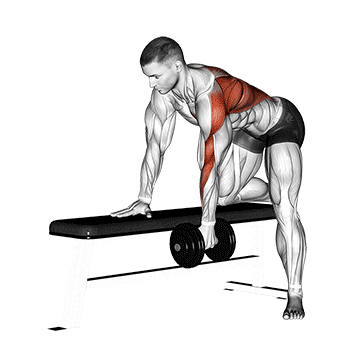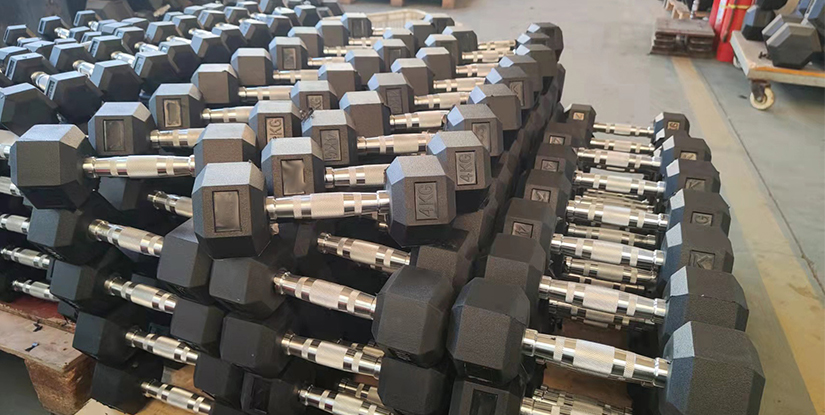If you’re not sure how to do a single arm dumbbell row properly, you’re not alone. A lot of people struggle to feel it in their back. Sometimes the arms take over. Sometimes one side just does more work than the other.
This simple move fixes all of that. It keeps your form tight, hits your lats deep, and makes both sides pull their fair share.
No fancy setup needed. One dumbbell. One arm. Real results.
Alright, here’s how to get it right.
What Is Single Arm Dumbbell Row?
The single arm dumbbell row is a pulling exercise that targets your back—one side at a time. You grab a dumbbell, brace with the other arm, and row. Simple setup. Big payoff.
What makes it different? You isolate one side. No cheating. No momentum. Just clean reps that force your back to do the work, not your arms.
Let’s break it down real quick.
Muscles Worked

- Lats (Latissimus Dorsi)
This is the main one. When you row right, you’ll feel that deep squeeze in your side-back area. - Rhomboids & Traps
These muscles help pull your shoulder blades together. They add that upper-back thickness. - Biceps & Rear Delts
Sure, your arms help—but they’re not the stars. Rear delts kick in to stabilize your shoulder. - Core
Yeah, your abs work too. Especially when you’re trying not to twist or sway.
Why This Move Works So Well
- Fixes imbalances
If one side’s stronger (or doing all the work), this helps even things out. - Stronger mind-muscle connection
You can feel the back working way more clearly with one arm at a time. - Great for beginners
It’s easy to set up. Easy to learn. And hard to mess up if you go slow. - No fancy gear needed
One dumbbell. A bench, chair, or even your knee on a couch—done.
How to Do Single Arm Dumbbell Row
The single-arm dumbbell row works your back—but only if you do it right. Don’t overthink it. Just follow these clear steps. Keep it tight. Keep it simple.

Step 1: Set your body up
One knee on the bench. Same-side hand on the bench too.
Other foot on the floor. Other hand holds the dumbbell.
Back flat. Like a table. Don’t round. Don’t arch.
💡Key point: Your spine stays straight the whole time.
Step 2: Let your shoulder drop first
Before you pull—pause.
Let the dumbbell stretch down a little. Let your shoulder blade drop.
Feels like you’re reaching toward the floor.
💡This activates your back. Super important.
Step 3: Pull with your back, not your arm
Pull the dumbbell up. But don’t think “lift.”
Think: drive your elbow back. Close to your body.
Squeeze your back. Like you’re pinching something behind you.
Step 4: Lower it slow and controlled
Don’t drop the dumbbell.
Lower it slow. Same line you pulled.
Let your back stretch again.
💡This part builds control and strength. Don’t rush it.
Step 5: Breathe right
Pull = exhale.
Lower = inhale.
💡Breathe with the movement. Helps with control.
✔️ Quick Tip: Let your shoulder lead
- Your shoulder blade should move first—not your arm.
- If you’re swinging or yanking, stop.
- Keep it smooth. Back does the work. Arm just follows.
Common Mistakes When Doing Single-Arm Dumbbell Row
Knowing how to do a single arm dumbbell row isn’t just about the steps—it’s also about avoiding the stuff that ruins the movement. Most people make small mistakes without even realizing it. The result? Less back engagement and wasted effort.
Here are the most common errors, what they lead to, and exactly how to fix them:
| Mistake | What Happens | How to Fix It |
|---|---|---|
| Using too much weight | Body twists, back loses tension | Drop the weight. Focus on control. |
| Pulling with the arm | Biceps take over, no back engagement | Think “elbow back,” not “hand up.” |
| No pause at the top | No contraction in back | Stop for 1 second at the top of each rep. |
| Letting the dumbbell drop | Lost control, wasted rep | Lower it slowly with tension. |
The single arm dumbbell row is simple, but when you do it right—it hits hard. You don’t need a lot of weight. You don’t need fancy gear. Just good form, focus, and a bit of control.
Take your time. Feel your back working. If it feels off, slow down or drop the weight. That’s normal.
Once you lock in the movement, it becomes one of the best ways to train your back—at home or in the gym.
So now you know how to do it. Go try it. You’ll feel the difference.

Hi, I’m Alex Carter, part of the editorial team at Leadman Fitness. We specialize in crafting premium custom racks, cable machines, functional trainers, and strength accessories for home and commercial gyms. With a background in competitive powerlifting and gym design consulting, I’ve spent years testing gear under heavy loads and optimizing layouts for efficiency.
I focus on translating real-world user frustrations—like space limitations, budget constraints, or durability needs—into actionable solutions. By collaborating directly with our engineers and facility owners, I ensure our custom equipment evolves to solve the unspoken challenges lifters face daily. What I share isn’t textbook advice; it’s battle-tested insight from racks I’ve welded, cables I’ve replaced, and gym floors I’ve trained on.
